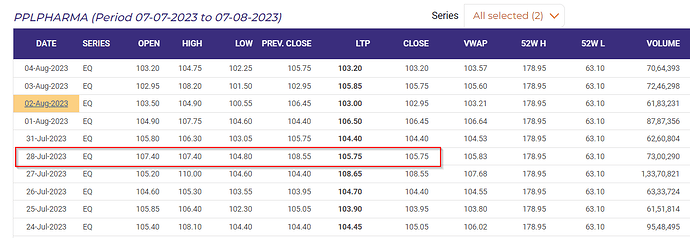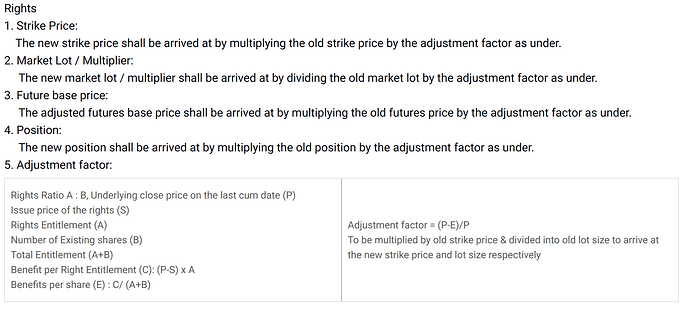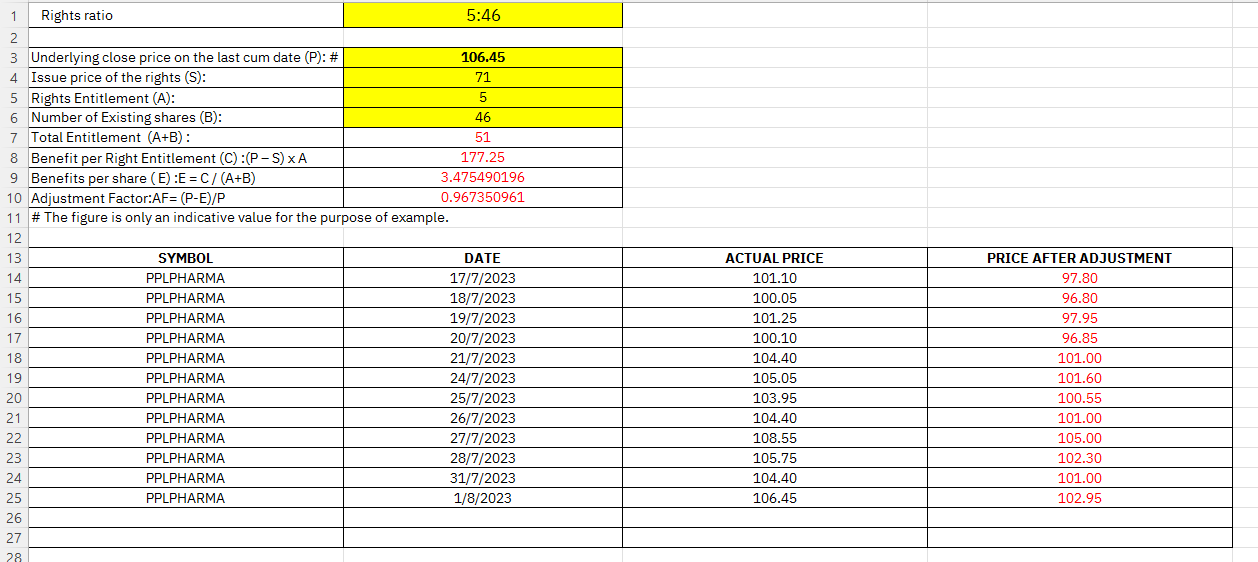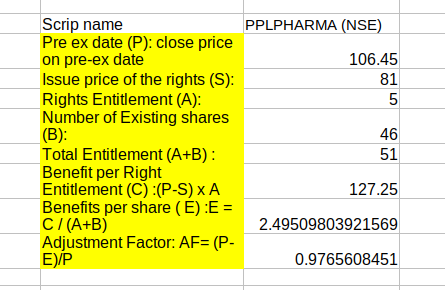I hope you’re all doing well. I wanted to start a discussion regarding adjusted prices for historical data after a rights issue, specifically focusing on the example of PPLPHARMA. I’ve noticed some inconsistencies in the historical closing prices provided by Zerodha/TradingView, and I’m curious to understand the methodologies behind these adjustments.
To recap, PPLPHARMA recently announced a rights issue of 5 shares for every 46 held, with a special price of Rs 71. The ex-date for this rights issue is 02-AUG-2023. Before the rights issue, we have the following historical closing prices:
26 Jul 2023 → 104.4
27 Jul 2023 → 108.55
28 Jul 2023 → 105.75
31 Jul 2023 → 104.4
01 Aug 2023 → 106.45
However, when I look at the Zerodha chart, I see different adjusted closing prices:
26 Jul 2023 → 101.95
27 Jul 2023 → 106.00
28 Jul 2023 → 103.25
31 Jul 2023 → 101.95
01 Aug 2023 → 103.95
Even more intriguingly, when I change to data view, the adjusted closing prices change again:
26 Jul 2023 → 106.00
27 Jul 2023 → 103.25
28 Jul 2023 → 101.95
31 Jul 2023 → 103.95
01 Aug 2023 → 102.95
This has left me somewhat puzzled, as I couldn’t find clear details on the adjustment methodology on the NSE India website. I did come across a methodology document from Refinitiv (https://www.refinitiv.com/content/dam/marketing/en_us/documents/methodology/corporate-actions-methodology.pdf), which sheds light on adjusted prices for various corporate actions. However, I’ve noticed that while it seems to work for splits and bonuses, it didn’t provide accurate results for rights issues.
I’m reaching out to the community to see if anyone can provide some clarity on this matter. Do you think the Zerodha/TradingView chart data is correct? Could there be a different methodology applied by Zerodha that’s causing these discrepancies? Are there any other reliable sources or documents that might shed light on how adjusted prices are calculated after a rights issue?
Your insights and experiences would be greatly appreciated.
Looking forward to your input!






